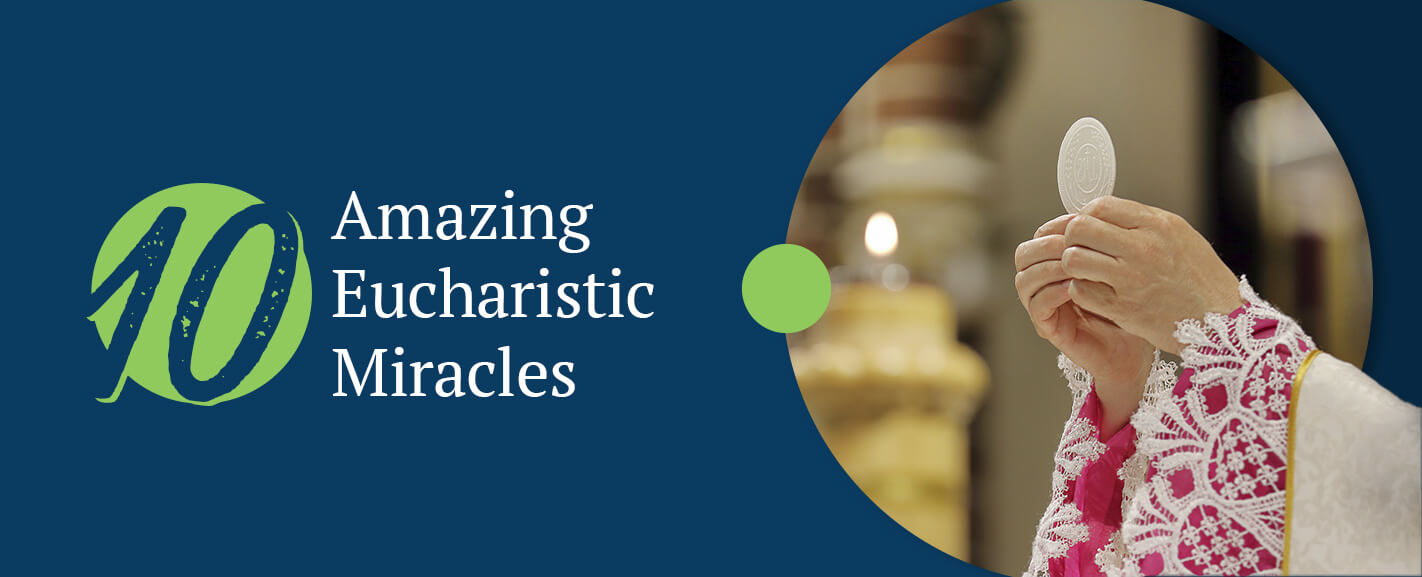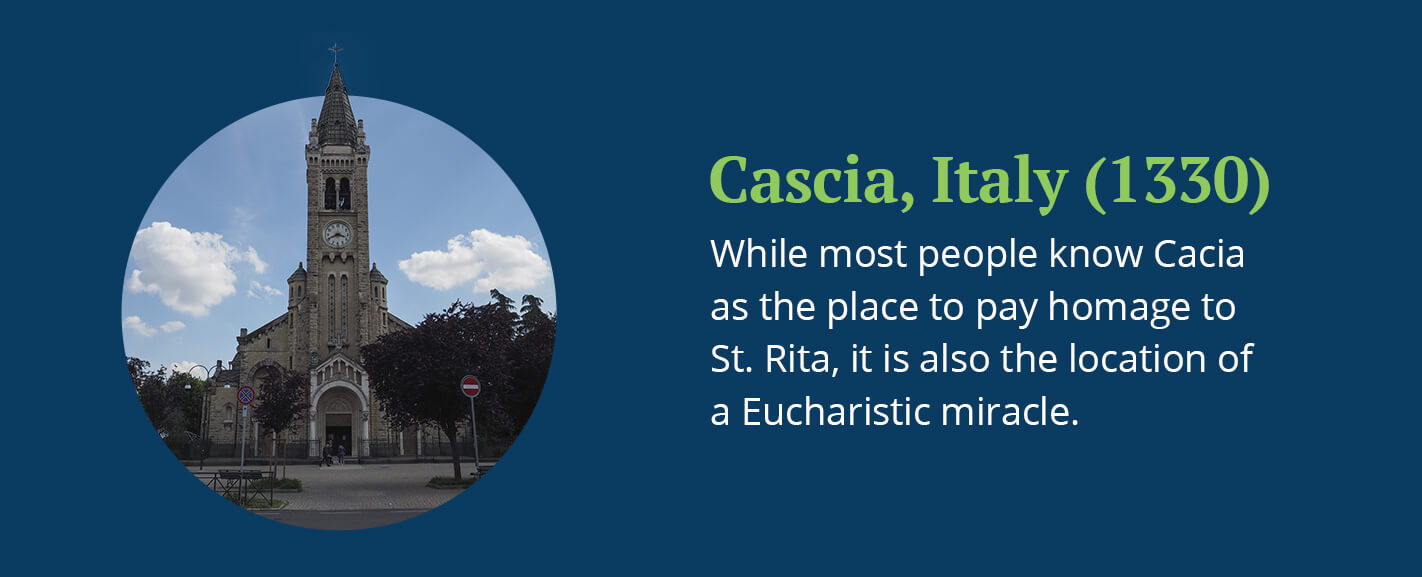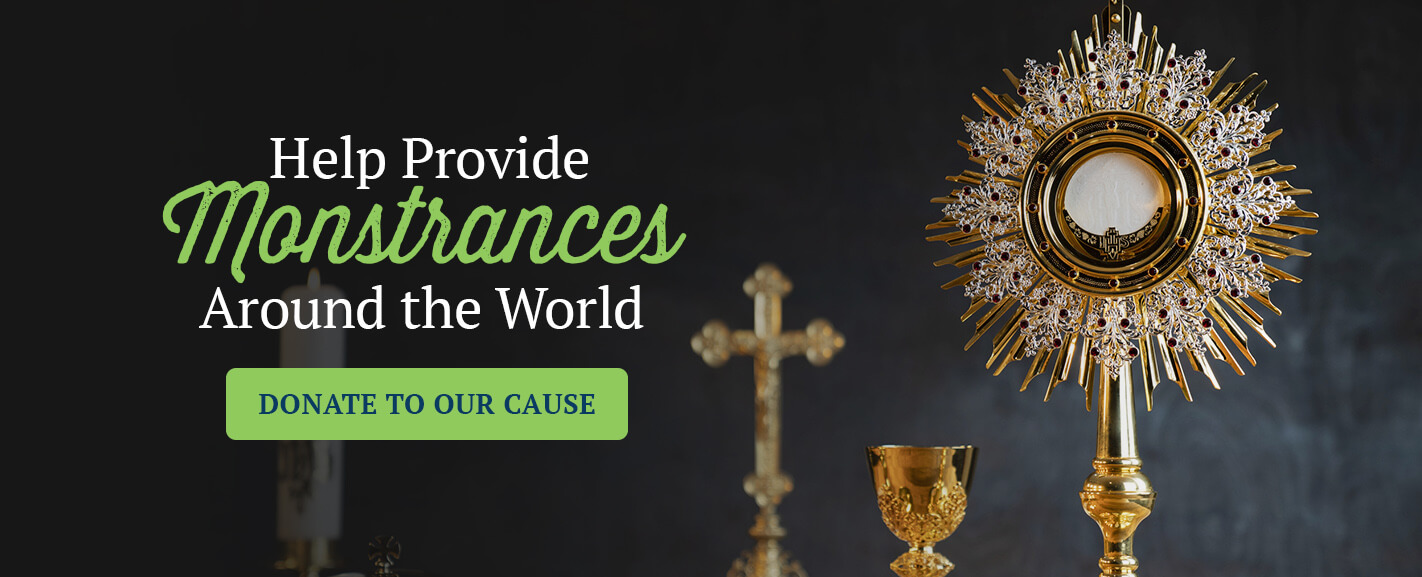Eucharistic miracles have occurred throughout the history of Catholicism. A Eucharistic miracle involves the body and blood of the Eucharist taking on biological qualities of Christ’s blood, flesh, or both. These extraordinary events have helped people see the spiritual reality of God’s hand behind the physical world, reminding Catholics even today that there is more to our existence than we can understand with our five senses alone.
In this article, you can discover 10 of the most famous Eucharistic miracles recorded throughout history. May they surprise and inspire you as you seek to deepen your faith and grow in your relationship with Jesus Christ.
Lanciano, Italy (8th Century, Circa 750)
The Miracle of Lanciano involved a priest who experienced doubts concerning Jesus’ actual presence in the Eucharist. As he was leading Mass, he began to recite the words of consecration found in 1 Corinthians 11:23-25. As he said, “This is my body” and “This is my blood,” he witnessed the wine and bread turn into real human blood and flesh. The blood then coagulated into five globules, which represented the five wounds of Christ.
Word spread rapidly of this miracle, and the flesh and blood remain preserved to this day. You can visit them in the Lanciano’s Church of San Francesco.
Bolsena-Orvieto, Italy (1236)
The Miracle of Bolsena-Orvieto appeared to a priest who doubted the doctrine of transubstantiation — that the bread and wine turn into the literal body and blood of Christ during Communion. After he had consecrated the Eucharist, the host began bleeding onto the altar’s liturgical cloth. At that exact moment, the priest ran and confessed his sin of doubt to the pope who was visiting the town at the time.
The liturgical cloth remains on display in the Cathedral of Orvieto where people visit to venerate and honor this sign of one of the earliest Catholic Eucharistic miracles.
Santarém, Portugal (13th Century)
There was a woman in Santarém whose husband was being unfaithful to her. She was distressed by this and decided to enlist a sorceress for help. The sorceress’s fee was a consecrated host, so the woman went to Mass at the Church of St. Stephen. When she received the Eucharist on her tongue, she removed it and wrapped it in her veil to bring to the sorceress.
Before the woman had even left the church, the host started bleeding. Instead of returning to the sorceress, she went home and placed the host in a trunk. During the night, light emanated from the trunk. She repented for what she had done and confessed to her priest the next morning. The priest retrieved the host and brought it back to the church, which is now called the Church of the Holy Miracle, where it remains to this day.
Cascia, Italy (1330)
While most people know Cacia as the place to pay homage to St. Rita, it is also the location of a Eucharistic miracle. A priest was preparing to visit a dying parishioner a short way from Siena. During his preparations, instead of putting a pyx in his prayer breviary, he placed a consecrated host instead.
After arriving at the dying parishioner’s house, he heard his confession and absolved him of his sins. He then opened his breviary only to find that the host had bled, staining both pages with blood. One of those pages remains today in Cascia.
Amsterdam, Holland (1345)
In Amsterdam in 1345, a devout Catholic man who had fallen ill desired to receive Communion. His family notified their local priest, who, after administering the sacrament, told the family to burn the sacraments in the fire should the sick man throw up. He did throw up that evening, and his family cast the purged Eucharist into the fire.
The next morning, the man’s wife looked into the fire and saw the host back in its original form. Not fearing for her safety, she reached in and retrieved the host. Besides retracting her hand unscathed, the host itself was cold to the touch.
Despite plunderings and attempts to remove the host from the city, it miraculously remained there for several hundred years until the church was torn down and the Miraculous Host was lost in the early 1900s.
Siena, Italy (1730)
On a summer day when Catholics in Siena were attending a festival on the eve of the feast of the Assumption, robbers stole hundreds of consecrated hosts from the Church of St. Francis. Two days later, someone at another church found the missing hosts in an offering box, covered in dirt and cobwebs. They then returned them to the Church of St. Francis.
The priests avoided consuming the hosts because they were dirty and chose to let them deteriorate naturally. Over the next few decades, the hosts never deteriorated. In fact, they appeared fresh as the years wore on.
You can still see the hosts today in the Basilica of St. Francis in Siena, Italy.
Betania, Venezuela (1991)
Some Eucharistic miracles happened only a few short decades ago. During a consecration mass near the Finca Marian Shrine in Betania, the priest broke the host into four sections and consumed one piece himself. Shortly after, one of the remaining pieces began to display a red spot that exuded a red substance.
After a series of studies and hundreds of tests, it was confirmed that the red spot was blood of the AB group and determined to be taken from a living heart. The blood of the priest was also confirmed to be of a different group than the blood of the host, counting out the chance that the priest bled on it.
Today, the Miraculous Host is on display in Los Teques at the Augustinian Recollects convent of the nuns of the Sacred Heart.
Chirattakonam, India (2001)
During Eucharistic Adoration at St. Mary’s parish, three red stains suddenly appeared on the Eucharistic host. Unsure of what to do, the priest placed the host back into the tabernacle.
Several days later, the priest looked at the host more closely. The red stains had arranged themselves to look like a man. He found a photographer to take pictures of the host, and today, many consider the shape of the face to be that of Jesus.
Tixtla, Mexico (2006)
During a retreat Mass at the Parish of St. Martin of Tours, a consecrated host began secreting a red substance. The diocese immediately contracted a study to determine its origin and cause. Microscopic analysis shows that the reddish liquid was secreting from within the host. After testing the liquid, it was determined to be blood of the AB group. As late as 2010, analyses showed that fresh blood continued to secrete from within the host long after the initial observation.
Legnica, Poland (2013)
It was Christmas Day when Msgr. Zbigniew Kiernikowski picked up a consecrated host that had accidentally fallen to the floor. He placed it in water to dissolve. Suddenly, a reddish color appeared on the consecrated host. Testing ensued, with the results finding that the host contained striated tissue from a human heart.
Other findings also posit that the tissue showed similar signs as those seen in tissue after the agony of death. Today, the Eucharistic miracle is on display in a small shrine.
Help Provide Monstrances Around the World
Catholic World Mission knows the importance of monstrances for Eucharistic Adoration for the faithful around the world. Yet some Catholics are unable to enjoy the blessings of Eucharistic Adoration due to lack of resources. We want to change this by providing monstrances to parishes in need, and we ask for your support to make it happen.
Please contact us today if you’d like to learn more. Or, you can donate to our cause online to help more parishes receive monstrances and continue the tradition of Eucharistic Adoration.



